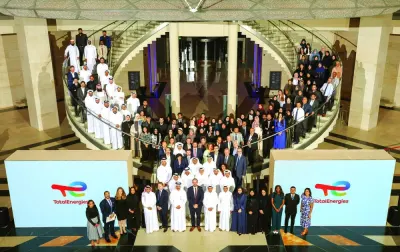 |
|
|
Nobuo Tanaka, Global Associate for Energy Security and Sustainability, IEEJ, warned that if governments do nothing in terms of policy or investment to address climate change, there will be a temperature change of 6OC by end the of the century - what he referred to as the “disaster scenario”.
He argued that without energy infrastructure changes, there is no way to address climate change.
Tanaka explained that the “new policy” scenario, which is the most likely scenario, will see the primary energy demand grow about a third from now to 2035, and 90% of this growth will come from emerging economies. China will account for about a third, India a quarter, and about two-thirds of the growth will be supplied by gas and renewable energy.
This revolution has been dubbed as “the golden age of gas” scenario, although Tanaka said that it may be a golden age for producers and possibly consumers, but not for sustainability. Natural gas still produces CO2 emissions, and replaces nuclear and renewable energy with no CO2 emissions, albeit with a reduction in coal.
The “new policy scenario”, if countries meet their Copenhagen commitments, will still see a 20% increase in CO2 emissions by 2035 and a 3.5 degree C temperature increase. CO2 emissions will not even have reached their peak, and will continue to rise.
The strictest CO2 reduction plan is the scenario calling for a cap of 450ppm for emissions from the energy sector.
This is expected to result in only a 2 degree temperature increase and a halving of CO2 emissions by 2050. This scenario requires $48tn of investment and the capturing of 15gigatonnes of CO2 by 2035.
“We would also need to build 20-30 nuclear power plants every year along with carbon capture equipment, renewable energy expansion and a market carbon price of $120 per tonne.
As Tanaka pointed out, this ideal scenario is very difficult if not impossible to achieve. He said that if we continue to use the currently installed infrastructure, we will have filled 90% of the 450ppm cap by 2017, so the “door to the 2OC scenario is closing”.
Tanaka said that China should contribute 30% of the total CO2 reduction as one of the biggest emitters, and combined when combined with the US should account for half of the reduction in CO2 emissions.
However, he pointed out that China will not commit to reductions until economic growth slows down, with one Chinese academic saying that international agreements will not be considered until 2025.
Tanaka warned that it may not be possible to mitigate climate change, and that we must accept and prepare for additional investment to deal with the outcome.
Stricken countries, like Thailand, are already struggling to estimate the total cost of flooding and other climate disasters. Adaptation to a new climate must be studied even, though many consider it to be a taboo subject and an acceptance of failure.
Beatriz Nassur Espinosa, HSE general manager Petrobras, provided Brazil as an example of a country that has voluntarily adopted climate change regulations and programmes.
Brazil is committed to reduce the country’s greenhouse gas emissions by around 36-39% by 2020. The country already derives 46% of its energy from renewable sources and is one of the world’s leaders in biofuels. Brazil’s business plan for 2011-2015 calls for a total investment of $224.7bn in energy and climate change mitigation, and will see a doubling of oil and gas production.
This plan includes a focus on energy efficiency, flaring reduction and technological development with $1.2bn in funding for these areas. Climate change mitigation will be allocated $1.4bn and $4.1bn will go to developing biofuels, while carbon capture and storage development research at different levels will get $200mn.
Part of Brazil’s 2015 commitments will be a contribution in helping to avoid emissions in transport and energy sectors by providing and researching ethanol for the fuel mix.
Espinosa said that technology development is ultimately the best contribution the oil and gas industry can make to climate change mitigation, although Brazil has separate programmes to tackle the issue as well.
David Byers, general manager Corporate & International Affairs, Airservices Australia, gave some insight into one of the most commonly proposed mechanisms to address climate change: a tax on carbon.
Australia’s government has moved to impose a carbon tax, which has proved to be divisive issue with the opposition promising to repeal it if elected.
Byers argued that the reason for imposing a carbon tax in a country whose prosperity is based on carbon intensive industries is more to do with domestic politics than science or economics.
Byers, who is himself an economist, said most economists agree that price signals encourage change, but unless action is taken by number of major energy consumers, action by one country is ineffective. In fact it leads to a competitive disadvantage for the Australian industry, and there are no signs of similar initiatives in other countries.
And yet, the government has gone ahead with the tax arguing that the rest of the world is acting, with the treasury expecting China to agree to a set carbon price as soon as 2021.
The panellists argued that if it is possible for a uniform carbon tax or fee to be implemented, they should be used to promote research in new technologies, although it is not clear what mechanism could be used to collect such funds.
However, there was an agreement that price signals, such as higher carbon costs, are better ways to encourage changes in the energy industry than binding government regulations.
An international agreement is still required, however, as voluntary carbon taxes will still leave countries stuck with the first mover conundrum.



